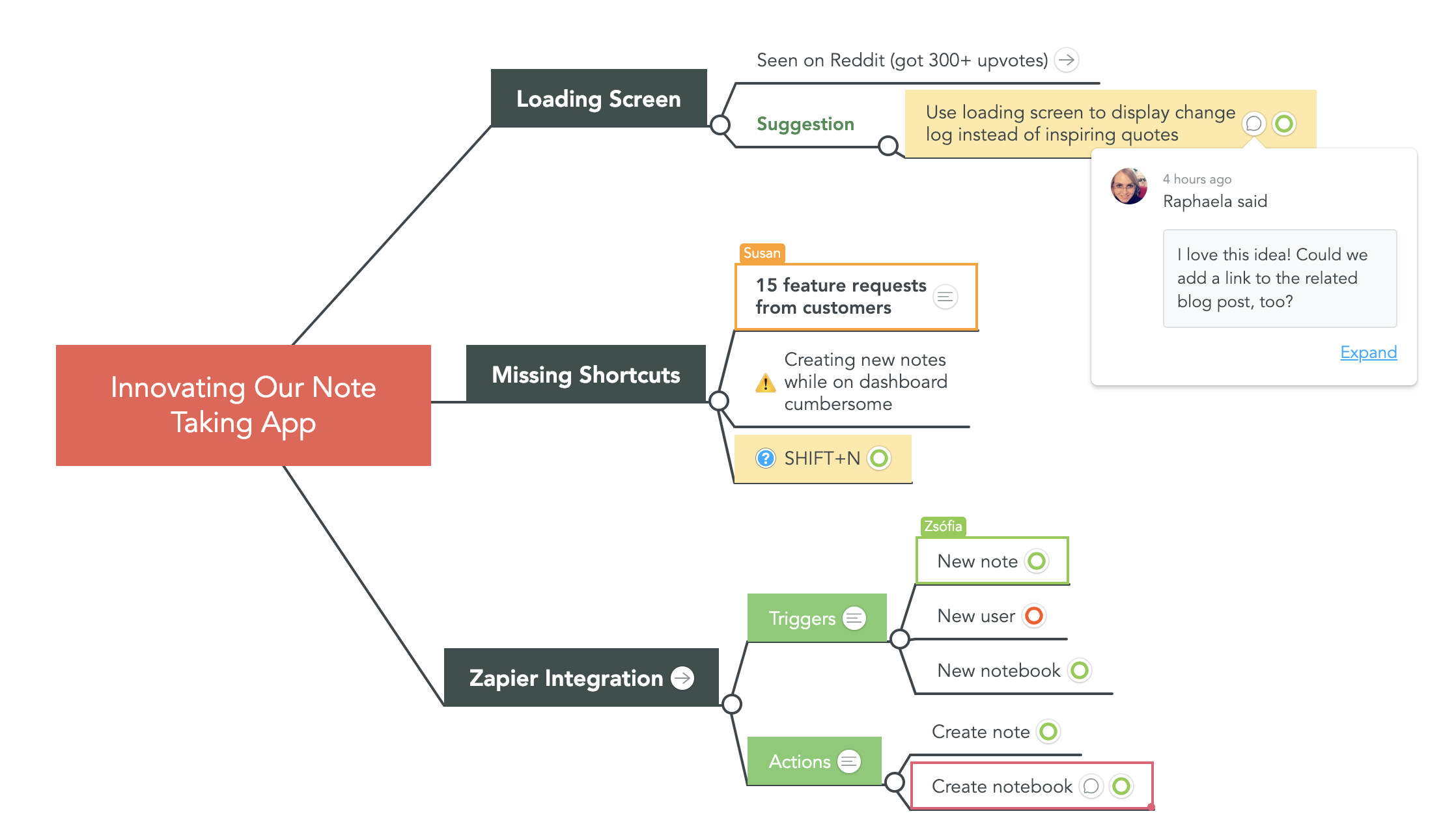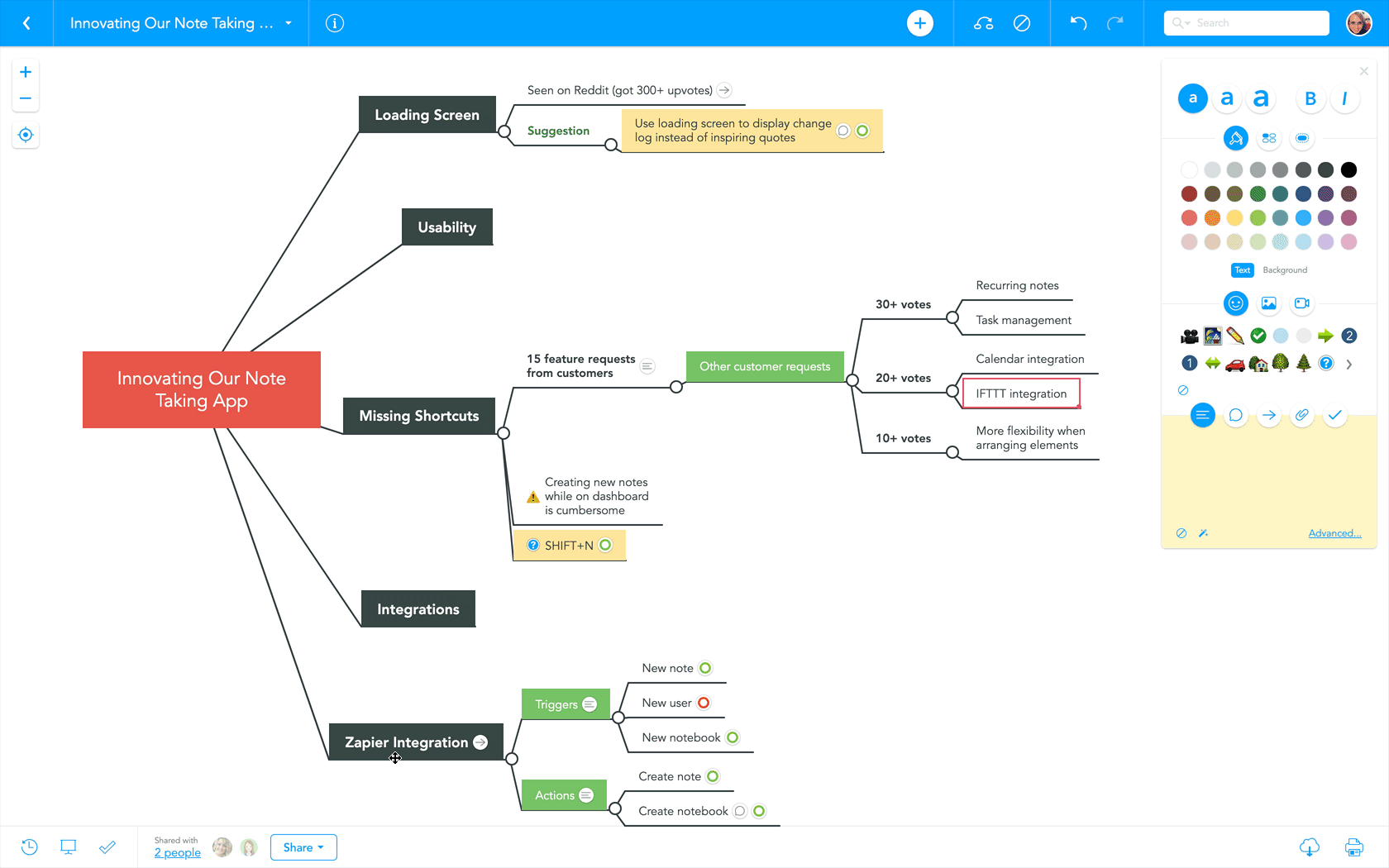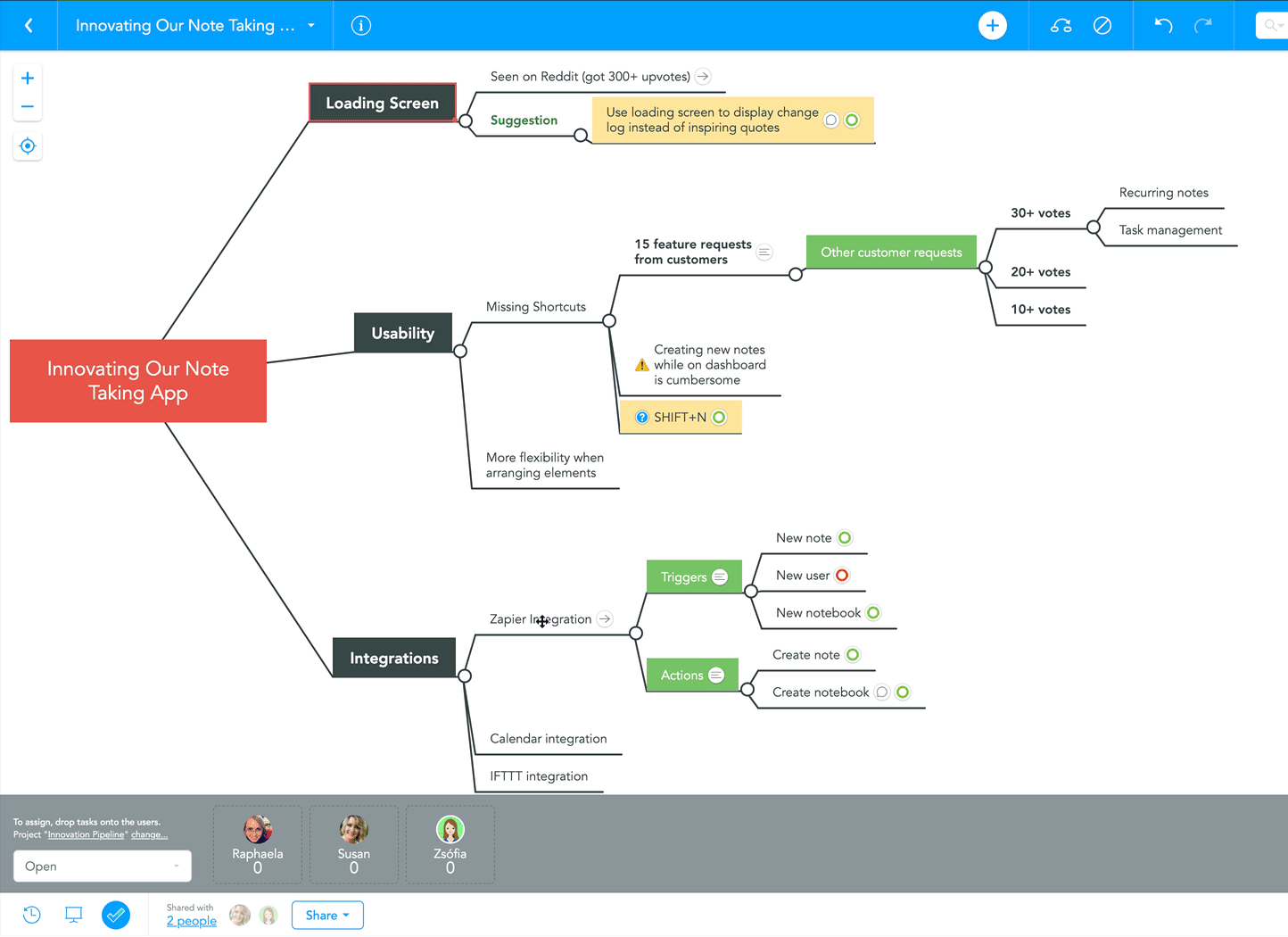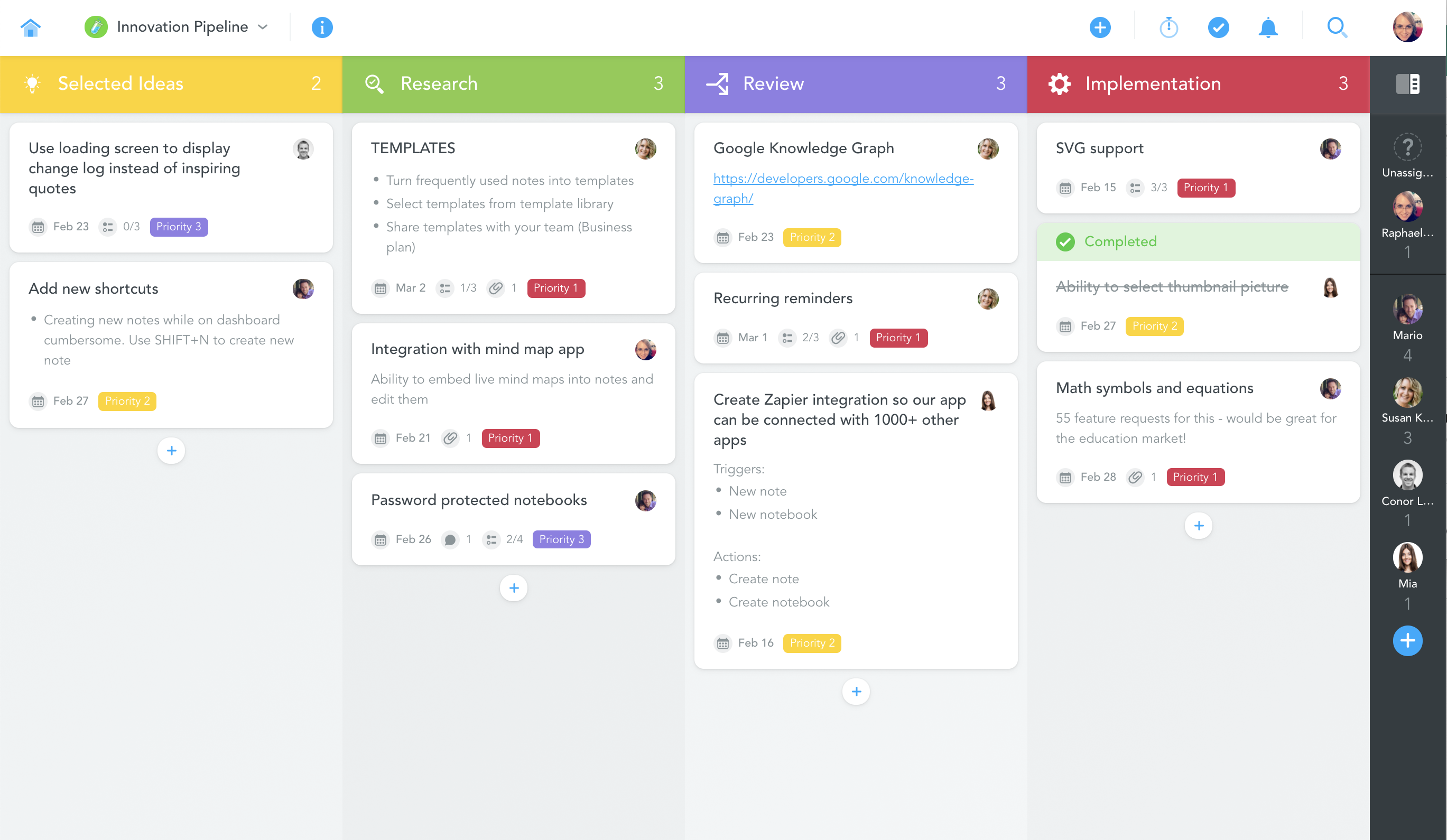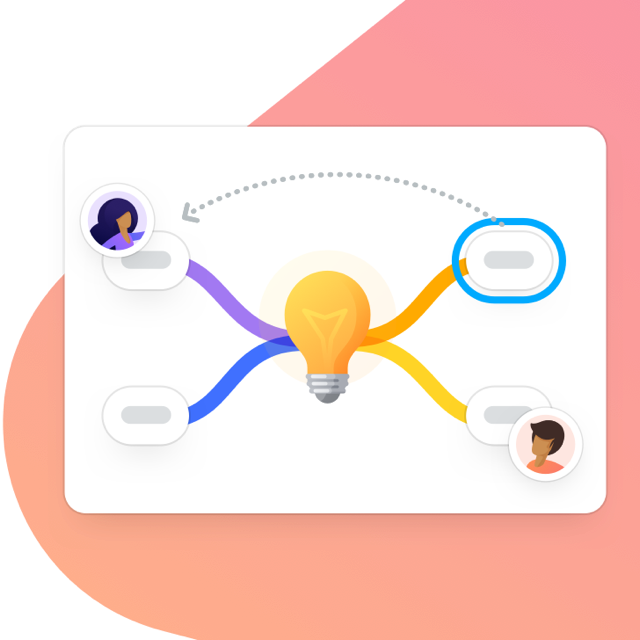Constant innovation is crucial for businesses who want to stay ahead of the competition. But how do you create a real culture of innovation? How do you foster a free exchange of knowledge and manage ideas efficiently? In this article, we’ll discuss how you can transform your business into a truly idea-driven organization, using collaborative idea management and task management software.

In their book “The Idea-Driven Organization”, award-winning authors Alan G. Robinson and Dean M. Schroeder discuss the power of ‘bottom-up ideas’, i.e. ideas generated by front-line employees such as technical support agents, sales clerks, assembly-line workers, and all those other people who usually don’t get a say in important business decisions.
If you want to turn your business into an idea-driven organization, the authors argue, it is exactly those front-line employees you need to engage. They are the ones who interact with your customers on a daily basis and know their problems, wishes and frustrations; they are the ones who are on the ground, on location, in the trenches; they are where the real work happens, which is why they are the first ones to notice when a process isn’t optimized or an important opportunity not realized.
Enlarge this mind map summary of the book “The Idea-Driven Organization” to view the book’s key takeaways at a glance:
How to Create an Idea-Driven Organization
If you want to follow the authors’ advice, your first challenge is to enable and encourage your front-line employees to share their valuable insights. Your second challenge is to group and prioritize these ideas in a meaningful way. Your third challenge is to implement ideas efficiently, creating a cycle of continuous improvement and innovation. Let’s look at all three of these challenges in turn and how you can use collaborative software tools to meet them successfully.
1. Facilitate the Exchange of Knowledge and Ideas
Authors Robinson and Schroeder suggest the usage of an idea board, which can be used to collect and process ideas visually. Idea boards also help to keep ideas front and center, creating a certain social pressure to complete assigned tasks on time.
While you can use a simple whiteboard in your meeting room for this purpose, web-based idea management software such as MindMeister brings this collaborative brainstorming process to a whole new level. Once you’ve set up a mind map to collect ideas, the map can be shared with front-line employees, who can access it no matter where they are located and which device they’re using. This way, even remote employees can provide valuable input.
Thanks to the visual format of the mind map diagram, employees can also build on each other’s idea and draw inspiration from people they may have never even met in person.
2. Group and Prioritize Ideas
One of the biggest advantages of idea management software is its flexibility. Idea mind maps are living documents that you can edit and update continuously. You can drag and drop individual ideas or whole branches to new positions in order to group them or separate them from the rest. A random side note added at the end of a huge branch can become the center of attention within seconds.
Using colors, icons and format options you can then highlight ideas and assign priorities. If you’re using MindMeister’s opinions feature, you can also enlarge ideas based on the number of upvotes they’ve received.
3. Implement Ideas Efficiently
Once you’ve prioritized ideas in MindMeister, you can drag and drop them into a connected project board in MeisterTask, a web-based team task management tool.
MeisterTask’s projects follow the popular Kanban layout but offer the flexibility needed to adapt them to your personal workflow. This way, you can set up an innovation pipeline that makes sense for your business, and efficiently move tasks through this pipeline until they’re completed.
Connecting your idea mind map with your innovation pipeline not only enables you to turn ideas into tasks via drag and drop; it also ensures that those employees who contributed to the mind map are automatically invited to the project board and can follow the progress of their ideas. Such transparency fosters belief in the innovation process and thus encourages employees to keep participating in the future.
Whether you’re trying to create the next big thing or are simply looking to improve your customers’ experience, you might be surprised how much you can gain by listening to your front-line employees. Using collaborative idea management and task management tools, you can then transform their ideas into results with unprecedented efficiency, giving your organization the competitive advantage it needs to grow and thrive.
Create a Truly Idea-Driven Organization
Try MindMeister
